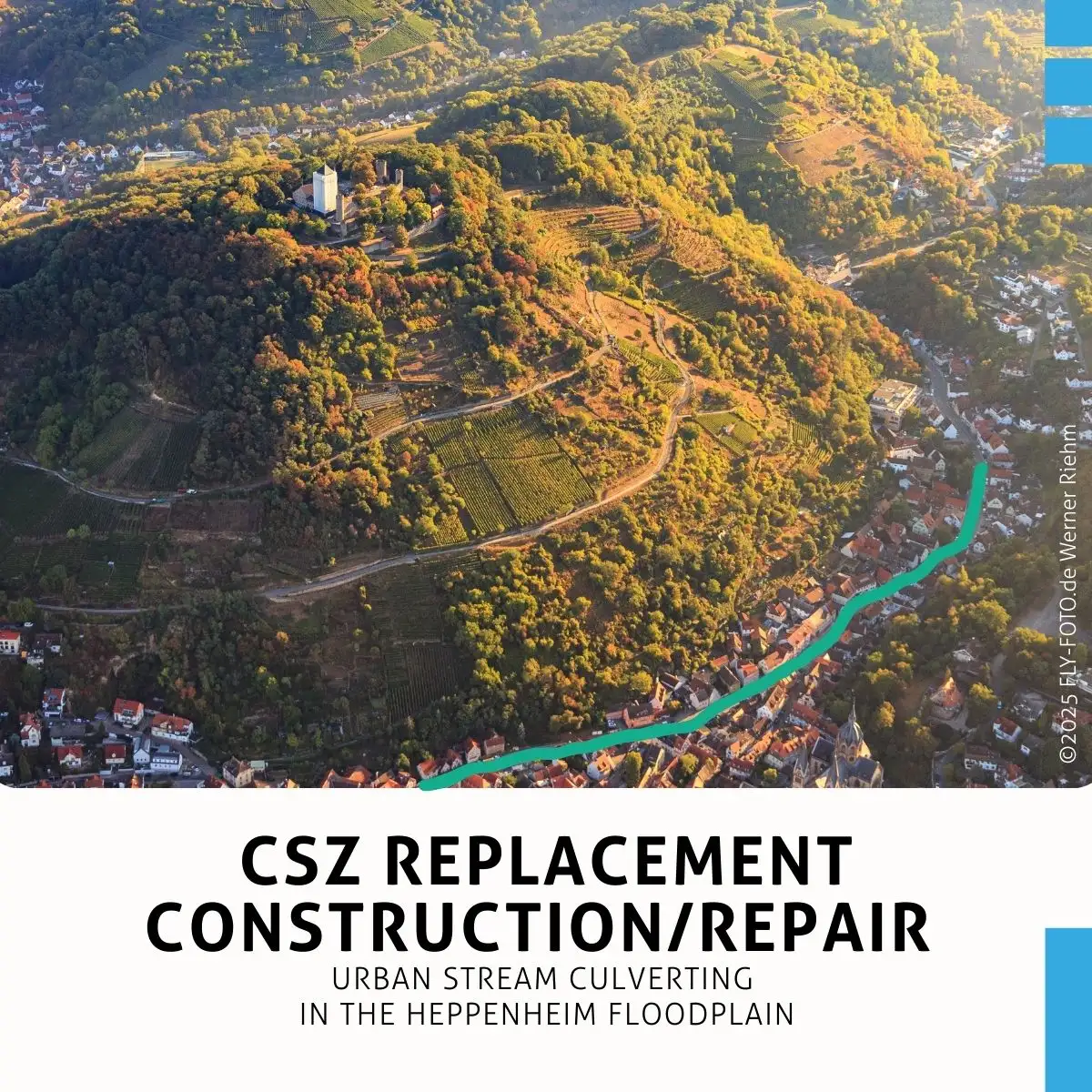
How Heppenheim is making its traffic lifeline under the B 460 resilient
More than just traffic flows beneath the road
Anyone driving along the B 460 in Heppenheim rarely suspects the complex infrastructure hidden directly beneath the asphalt. Around 14,000 vehicles roll along here every day – cars, trucks, commuters, life. But underground, an invisible lifeline of the city is at work: the Stadtbach stream, enclosed in a culvert that is now reaching its limits.
Between city center, history, and engineering
In the heart of Heppenheim, cramped urban conditions, historic buildings, and modern requirements come together.The challenge: a 614-meter section, a vaulted structure over 100 years old, and a reinforced concrete frame from 1968 – all under ongoing traffic and with limited space for diversions.
How to rethink a structure while it remains in use
CSZ is responsible for the object and structural design for the renewal of the culvert—including the reorganization of road drainage, integration of a pre-treatment plant, diversion of the city stream during the construction period, and hydrological design for HQ100 (12 m³/s). The principle here is: only as much closure as necessary, as much renewal as possible.
A construction site in the middle of life
The inner-city location makes construction logistics an engineering feat in itself. Access roads for residents, emergency services, and hotel guests, some via auxiliary bridges, will be maintained. And to protect local residents, we are using low-emission methods—technology that shows consideration.
Sustainability begins beneath the surface
What is being created here is more than just a building: it is an example of resilient infrastructure – permanently sustainable, safe in the event of flooding, and ecologically well thought out. Together with all parties involved, we are planning a solution that protects both Heppenheim’s traffic and its waterways.
A strong plan for Heppenheim
CSZ won the VgV competition for this challenging project – and is delighted to be making one of southern Hesse’s central transport axes fit for the future. A project that shows how engineering, sustainability, and urban development go hand in hand.
